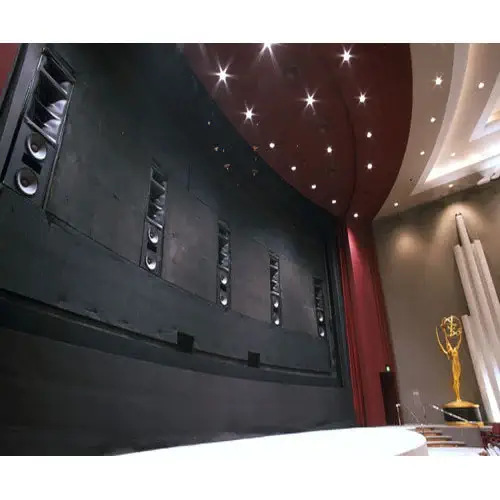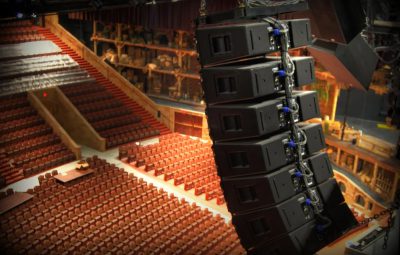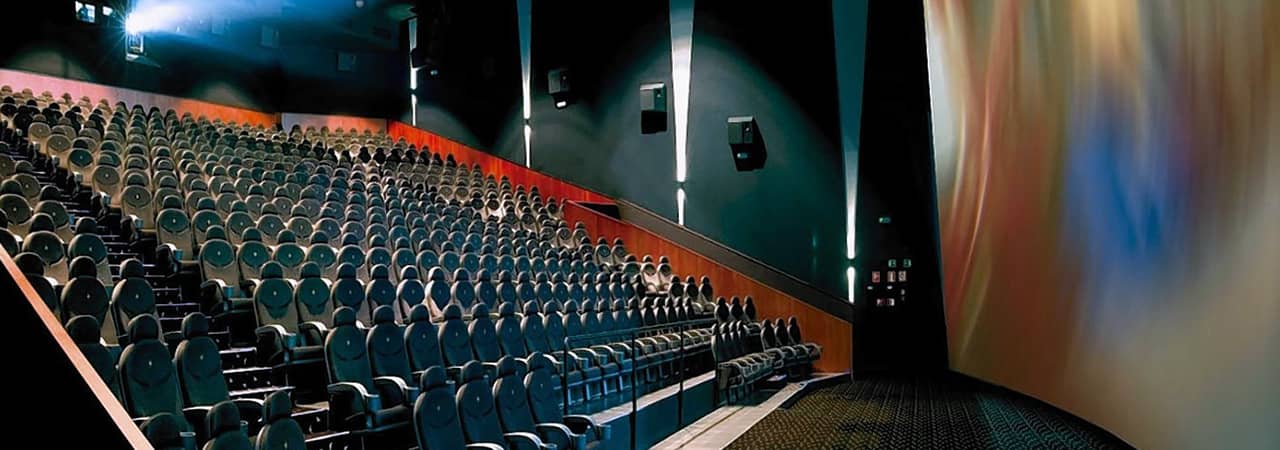A good and calibrated movie theater sound system is one of the basic necessities of a cine hall. After the movie starts and the lights go off, it is the image and then the sound quality that attracts the audience. An unprincipled or low-quality cinema sound system makes the sound not reach the ears of the listeners, they do not understand the dialogues, and sometimes the inappropriate sound annoys their ears and they even leave the hall. So, before thinking about design and architecture, you must be familiar with the cinema sound system—models, details and qualities.
In the following article, we are going to share information about the sound system of the movie theater. Join Zico website now for more and more. you could find more details on The History of Sound in Cinema.
History of sound in cinema
In the beginning, cinema was silent; after a long time in 1927, sound entertains this industry and brought about many changes.
In the 1950s, many improvements were made in the field of recording, which was a breakthrough, boosting the quality of sound films outright. Also, in the decade, the cinematographers invented a chess system for playing the voice of actors and actresses. The cinema sound system was completely perfected in the following decades and since the 90s, it has reached its best quality with the digital system ever since.

Dolby sound system
There are different ways to record and play audio. The best old method that was used in old cinemas was the mono or single sound method where all sounds were recorded through one channel and played through one speaker.
However, gradually the stereo system inventing the cinema industry more appealing, and made changes in the cinema sound system. Its early systems had two recording channels and played over two speakers.
Imagine that in the shooting scene of a movie, two recording channels would take the place of the human ear, and during the broadcast, each of these channels would be connected to a set of speakers.
Mostly, the Dolby sound system is used as a motion picture sound system, which is named as an analog system in this industry. Dolby Institute cooperates with cinema equipment companies and movie studios, having made a significant impact in the field of recording and broadcasting movies, know is able to experience advances further.
For instance, this institution has added recording and broadcasting channels, and has given wonderful experiences to the audience. The Dolby-stereo system actually consists of three front channels and one surround channel. In the early stereo systems, a magnetic tape is used to record sound, but in the Dolby stereo system, optical tapes with less noise and more accurate playback, all are being used.
Over time, there have been improvements in the field of encryption, and in this regard, information is stored more accurately in less space. This new development gave birth to a digital sound system.
Nonetheless, in 1993, when the movie Jurassic Park was released, a company called Digital Theater Systems released the new DTS technology in the cinema sound system.
This system has six different sound channels that are recorded on one or two CDs. During playback, the audio cinema system needs a disc reader and decoder to analyze the CD information for playback on six channels. Also, this system has three facing channels and a subwoofer. Two other separate channels are also available on the left and right sides. Subwoofer is a channel that has the task of playing low-frequency sounds and gives the sounds a bass and strong state.
Later, another system was provided by this laboratory, which is called Dolby Digital. This system has five channels and a subwoofer and it is called Dolby 1.5. Others were added to other channels and the best types of Dolby systems are 1.5, 1.6 and 1.7. In these models, the number to the left of the dot indicates the number of sound channels and the number to the right indicates the number of subwoofers.

Speakers needed in cinema sound system
Treatment in cinemas comes from surround sound systems, which are a set of speakers that are placed in specific places and around them. In fact, the surround sound system by improving the sense of space and better direction, finally creates a wonderful sound. There are several choices for using speakers in an audio system, however, you should get the cine speakers according to sound effect, room size and budget.
So, with this account they go to a set of speakers. Front speakers, side speakers, speakers and subwoofer are among the speakers used in the cinema. In a movie, there are different types of sounds with different effects such as dialogue, background sound or ambience (such as street noise), music and effects. So be sure to familiarize yourself with these items and their sound recording type so that you can make a better sound system. Below we suggest some good choices for a movie theater in this regard, which include:
- Zico nx-12p Passive speaker
- Zico sx-12p Passive speaker
- Zico Mk-725p Passive speaker
- Zico MK-735P Passive speaker
- Zico w-17p Passive speaker
Setting up the speakers
After buying a set of speakers, it is time to set them up, which is undoubtedly one of the most important things in a cinema sound system. Unfortunately, it can be seen in many cinemas in the country that sometimes the audience has to ask their companions several times to tell them a part of the dialogue and they may not understand a part of the movie at all. On the other hand, it sometimes happens that some of the audience hear the dialogues and the music very loud.
On the other hand, the placement of the speakers in the cinema sound system is very important. If the speakers are placed on the sides of the hall or behind the curtain, the audience actually sees the movie from the front, but the voices of the actors are heard from the side or behind the curtain.
This confuses them and reduces watching the movie. These two cases are among the problems that arise due to the wrong placement and adjustment of the speakers.


